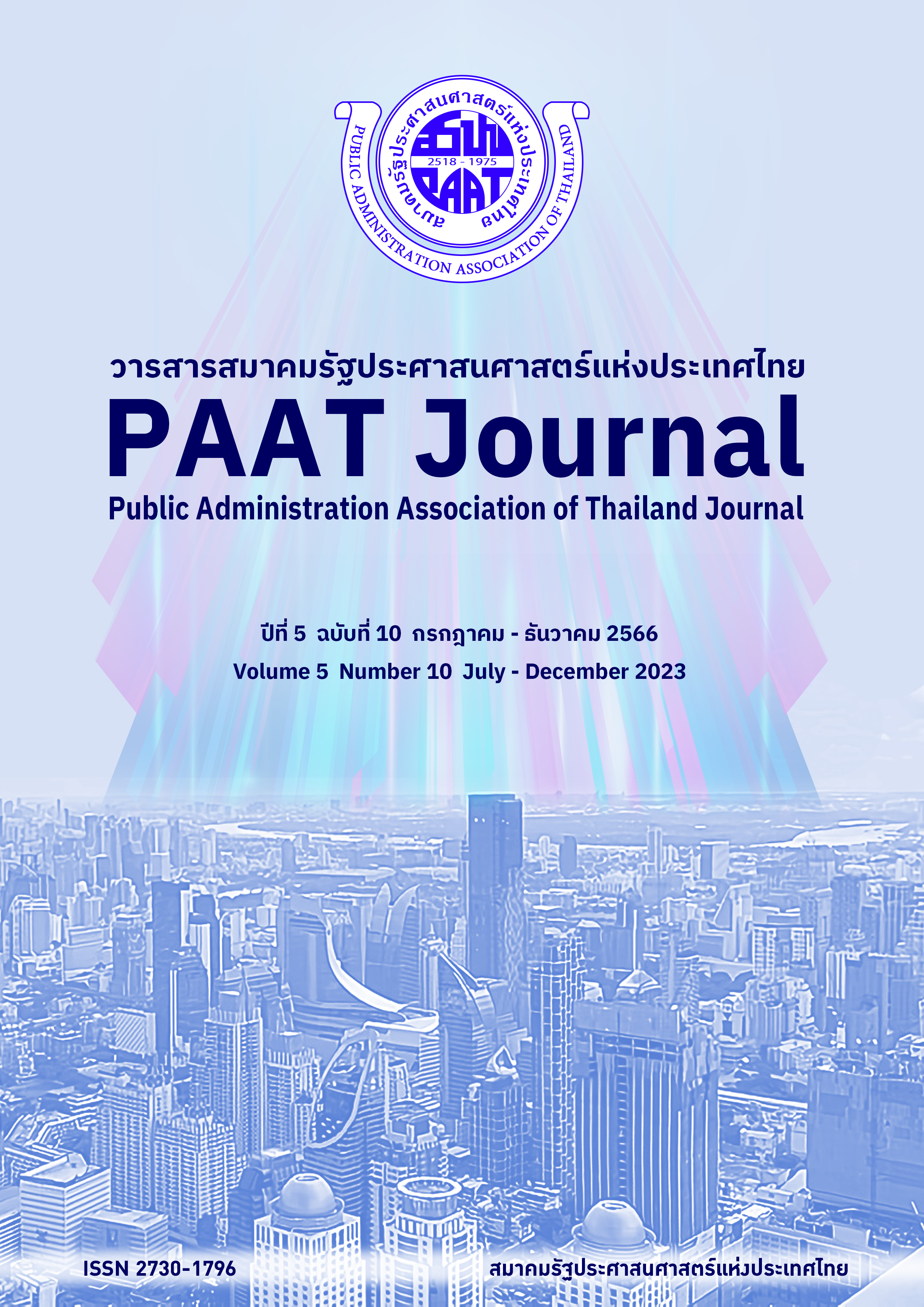Collaborative Governance Approach among Public, Private, and Civil Society in Designing of Central Bank Digital Currency in Thailand
Keywords:
Digital Currency, Central Bank, Collaboration, Public ParticipationAbstract
The objectives of this article are to (1) study the nature of collaboration among the government, private sector, and civil society in designing digital currencies issued by central banks; Using a case study from digital currencies issued by foreign central banks and (2) presenting the concept of collaboration among government agencies, private sector, and civil society in designing of digital currencies in Thailand.
Digital currency is a new issue that central banks around the world are interested in exploring and researching. While some foreign central banks, such as the Central Bank of China and the Central Bank of the Bahamas has launched their central bank digital currency by using the collaborative concept for designing of central bank digital currency as the country's infrastructure. This article outlines central bank digital currency design concepts collected from articles and various research both inside and outside the country, included studying from case studies of the central bank of China and the central bank of the Bahamas. The author found that case studies from both countries are focus on the concept of collaboration between various sectors in designing and developing digital currencies, which is used as guidelines for the concept of collaboration among the government, private sector, and civil society in designing digital currency in Thailand. By applying concept of new public management and public participation in designing Thailand's central bank digital currency to maximize benefit for Thailand.
References
Arnstein, S. R. (1969). A ladder of citizen participation. Journal of the American Institute of planners, 35(4), 216-224.
Bank of Thailand. (2021). Retail Central Bank Digital Currency: Implications on Monetary Policy and Financial Stability in Thailand. https://www.bot.or.th/Thai/PressandSpeeches/Press/News2564/n6064t_annex.pdf
Cohen, J. M., & Uphoff, N. T. (1980). Participation's place in rural development: Seeking clarity through specificity. World development, 8(3), 213-235.
Erkut, B. (2020). From digital government to digital governance: are we there yet?. Sustainability, 12(3), 860.
Kennett, P. (2010). Global perspectives on governance. In The new public governance?.Routledge.
Kosse, A., & Mattei, I. (2023). Making headway-Results of the 2022 BIS survey on central bank digital currencies and crypto. BIS Papers. IAP2. (2018). IAP2 Spectrum of Public Participation. International Association for Public Participaiton (IAP2). Osborne, Stephen (2006). New Public Governance?. Public Management Review, 8(3), 377-387.
Pestoff, V., & Brandsen, T. (2010). Public governance and the third sector: opportunities for co-production and innovation?. In New Public Governance? Emerging perspectives on the theory and practice of public governance. Routledge.
Rhodes, R.A.W. (1996). The New Governance: Governing without Government.Political Studies, 44(4), 652-667.
Soderberg, G., Kiff, J., Tourpe, H., Bechara, M., Forte, S., Kao, K., ... & Yoshinaga, A. (2023). How Should Central Banks Explore Central Bank Digital Currency?. FinTech Notes (008).
Working Group on E-CNY Research and Development of the People's Bank of China. (2021). Progress of Research & Development of E-CNY in China. http://www.pbc.gov.cn/en/3688110/3688172/4157443/4293696/2021071614584691871.pdf
World Economic Forum. (2020). Central Bank Digital Currency Policy-Maker Toolkit. http://www3.weforum.org/docs/WEF_CBDC_Policymaker_Toolkit.pdf
World Economic Forum. (2023). Central Bank Digital Currency Global Interoperability Principles. https://www3.weforum.org/docs/WEF_Central_Bank_Digital_Currency_Global_Interoperability_Principles_2023.pdf
Downloads
Published
How to Cite
Issue
Section
License
Copyright (c) 2023 PAAT Journal

This work is licensed under a Creative Commons Attribution-NonCommercial-NoDerivatives 4.0 International License.


